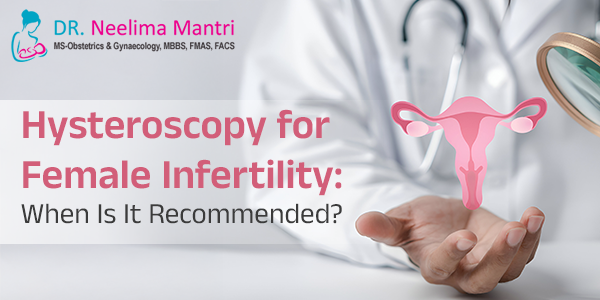Infertility can be hard to deal with. It brings questions. It brings stress. And it brings the need for answers. One way doctors get those answers is through a procedure called hysteroscopy. Hysteroscopy is a simple way to look inside the uterus.
A small camera goes in through the cervix. No cuts. No stitches. It helps the doctor see if something is stopping a pregnancy from happening. For many women, it provides clarity. For others, it’s the first step toward treatment.
When Is Hysteroscopy Recommended for Infertility Treatment?
Hysteroscopy is advised when scans or blood tests don’t explain the cause of infertility. It’s also suggested if you’ve had repeated miscarriages or failed IVF cycles. Some women experience heavy bleeding or irregular periods. Others may have fibroids, polyps, or a uterine septum. These can block the path for a fertilised egg or stop implantation.
If a doctor suspects any of these, hysteroscopy gives a clear view. It helps confirm the diagnosis. It also lets them treat the issue on the spot. Small tools can remove polyps or scar tissue during the same procedure. That saves time. That avoids second surgeries.
Why Is It Done?
Hysteroscopy helps detect problems like adhesions, fibroids, or structural changes in the uterus. These may not always show up in regular ultrasound scans. The procedure improves the success rate of fertility treatments.
It prepares the uterus to receive and support a pregnancy. It’s often done before starting assisted reproductive treatments. Some doctors also use it between IVF cycles to improve outcomes. For many, it is the missing piece of the puzzle.
Is It Safe?
Yes, hysteroscopy is safe. Most procedures are done as day care. You don’t need to stay overnight. The anaesthesia used is light. The scope is thin and flexible. That makes it less painful. Bleeding, cramps, or light discharge may happen after the procedure. But serious risks are rare. The uterus heals quickly. There are no external scars.
How Long Does Recovery Take After Hysteroscopy?
Most women go home a few hours after the procedure. They rest the same day. Normal activity can resume in a day or two. Painkillers may be given for mild cramps. Sexual activity is usually avoided for a few days. Your doctor will guide you based on what was done during the procedure. If any treatment was carried out, like removing fibroids, recovery may take longer. But in most cases, it’s short and manageable.
Finding the Right Expert Matters
If you are thinking about hysteroscopy for female infertility, choosing the right doctor makes all the difference. You need someone with experience in both diagnostics and fertility care. If you’re in Mumbai, you’ll want the best gynaecologist for hysteroscopy in Mumbai. Someone who can explain things clearly.
Someone who can guide your fertility journey with care and detail. One trusted name is Dr. Neelima Mantri, known for her work in advanced gynaecology and infertility treatment. She takes time to assess your history. She explains the reasons behind each step. And most importantly, she offers a personalised approach for every patient.
Your Fertility Journey Deserves Clarity
Hysteroscopy is not the first test in infertility care. But it’s often the one that brings real answers. It shows what scans miss. It treats what others cannot. And for many, it opens the door to pregnancy.
Ask your doctor if it’s right for you. Talk about timing. Discuss risks. Understand the benefits. Your fertility plan should be based on facts, not guesswork. When used at the right time, hysteroscopy gives you more control. More insight. And a better chance at starting the family you’ve been hoping for.



